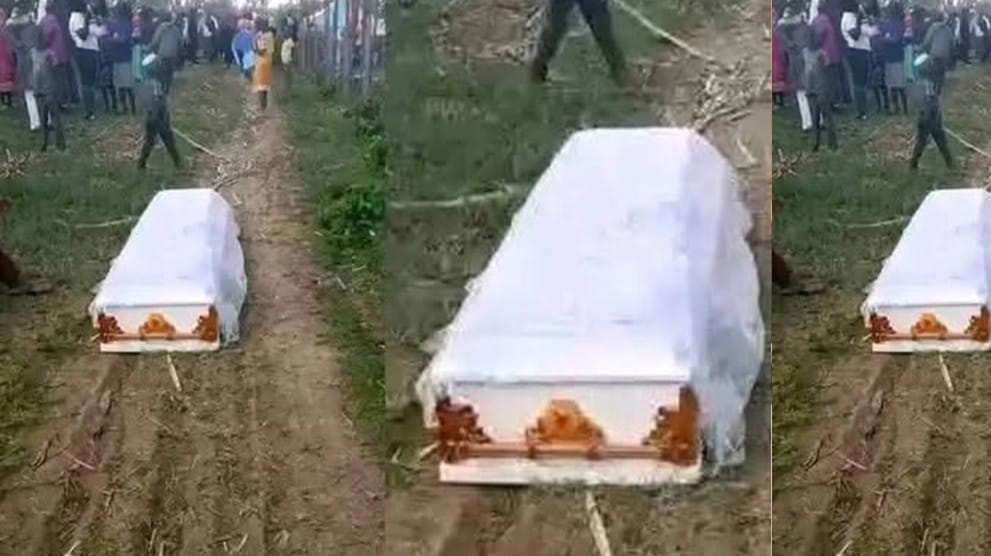In the heart of Lugari, Kakamega County, a bizarre story spread like wildfire. People whispered, some screamed, and others swore they saw it with their own eyes, a coffin moving by itself. It was the kind of tale that crawls under your skin, the type of story that fuels both fear and fascination in equal measure. In rural Kenya, where spirituality and superstition often walk hand in hand, such a story was bound to go viral. But behind the whispers and shouts, behind the shaky phone recordings and the hasty conclusions, there was a much more human story—one that was less about witchcraft and more about family, culture, and pain.
Picture the scene: mourners gathered, the air heavy with grief, women wailing in unison, men murmuring among themselves, and then—out of nowhere—the coffin holding the body of an old man appears to move. Not once, but twice. Gasps filled the compound. Some scattered, some froze in shock, and others bolted out of fear, their sandals left behind in the dust. The rumor began right there: “The coffin is moving on its own!”
But was it really?
The image of a coffin shifting without human touch is enough to unsettle anyone. For some, it triggered memories of the mystical stories passed down by grandparents; for others, it played straight into the narratives of witchcraft that are deeply woven into rural life. Yet in reality, no coffin wakes up and walks. Something else was at play.
By evening, the entire village was buzzing. Some claimed they saw the coffin drag itself across the ground. Others insisted they heard the old man’s spirit crying for justice, unwilling to be buried in the wrong homestead. Children cried, women clung to each other, and men debated loudly whether this was a sign from the ancestors or the devil himself at work.

Coffin That Moving
Fear spreads faster than fire, and in a community where spirituality is respected, such an incident wasn’t just gossip—it was a warning. Many refused to go near the homestead that night. Some even refused to eat food from that funeral, saying it was cursed. And yet, beneath all the noise, some people knew the truth but chose silence. They understood what was happening but let fear win over reason—at least for a while.
Curiosity got the better of me. I wanted to know—did this coffin truly move by itself, or was this another exaggerated village tale? I followed up by speaking with those close to the family. And slowly, the puzzle began to fit together.
It wasn’t spirits. It wasn’t witchcraft. It wasn’t even a sign from beyond. What actually happened was painfully human. The coffin appeared to “move” because the pallbearers carrying it were being pulled in two directions—literally. On one side, members of the elder household insisted that the old man must be buried on their side of the homestead. On the other side, the younger wife’s household refused, arguing that he belonged with them. As each group tugged and pulled, the coffin shifted awkwardly, swaying like it had a life of its own. From a distance, especially to those blinded by fear, it looked as if the coffin was alive.
And just like that, a family’s private struggle became a public spectacle.
At the heart of it, this wasn’t about witchcraft. It was about belonging. In polygamous families, questions often arise when the patriarch passes on:
Where will he be buried? Who has the final say? Which wife, which children, which homestead will carry the honor of his final resting place?
This old man had left behind two households, each with its pride, each with its expectations. The elder wife felt she had earned the right of burial honor through years of loyalty and tradition. The younger wife’s family, however, argued that she was the one who had taken care of him in his final years, and therefore, he should rest in her compound. Neither side was ready to give in, and the coffin became the rope in their tug-of-war.
The villagers may have seen a moving coffin, but in truth, they were witnessing the visible weight of unresolved family disputes. It wasn’t spirits pushing that coffin; it was grief, ego, and the desperate human need for recognition.

